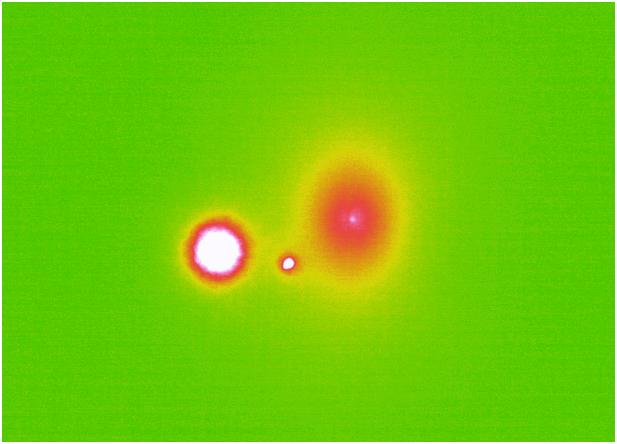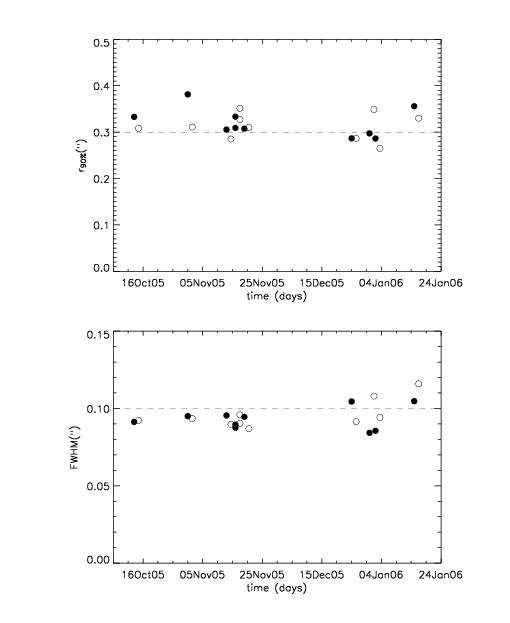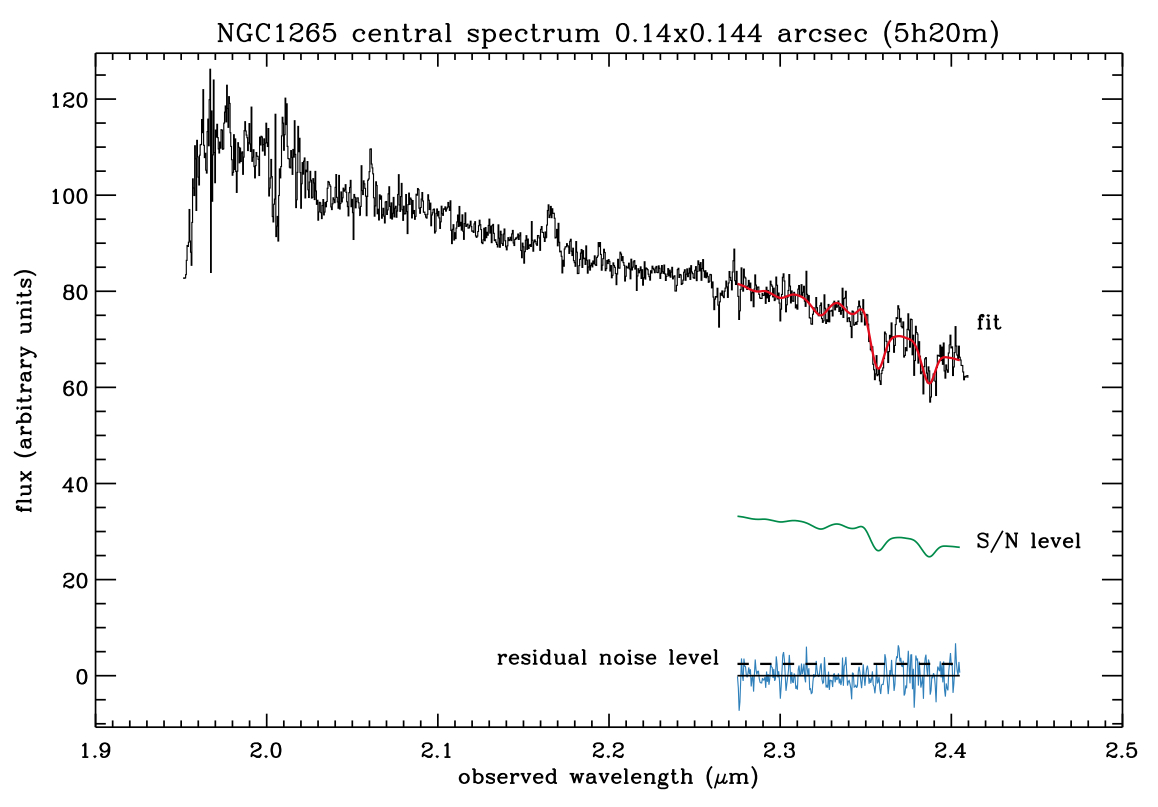
From November 2004 to January 2006 we have acquired Adaptive-Optics (AO) assisted Near-IR observation for the nuclear regions of NGC1265, the second most massive galaxy in the Perseus Cluster, in order to measure the mass of the central supermassive black hole in this galaxy.
Out of the 28h initially allocated to this Band 1 program, a total of 12h were eventually collected by the end of the rollover period. Of this time, 1h were dedicated to imaging and 11h to spectroscopy.
Figure 1 shows our best AO-corrected sky-subtracted image of
the nucleus of NGC1265. The bright natural-guide star that we used
is almost exactly 3'' to the east of NGC1265, where the presence
of a bright nucleus is revealed by these K-band observations. A
fainter double stars is also present, roughly half way between the
AO-star and the nucleus.

|
Figure 1 |
To monitor the performance of the AO correction, our
spectroscopic observations were bracketed by short
images. Figure 2 shows the FWHM of the natural-guide
star measured in these images, as well as the radius
containing 90% of the flux. Filled and open circles show
the quality of the AO correction before and after our
spectroscopic observations, respectively. Throughout our
program the quality of such an adjustement was very
good, with an average FWHM of less than 0''.1.

|
Figure 2 |
In an attempt to provide a first estimate for the quality of the NIRI-Altair spectroscopic observations and for the value of the central velocity dispersion in NGC1265, we have reduced and combined 32 - 600s frames, for a total of 5h and 20m of on-source observing time.
Figure 3 show the central 7 rows of such a combined
2D-spectrum, corresponding to a 0''.14x0.''14 aperture,
together with a fit to the CO 2.3nm band-head with one
of the kinematic templates we have acquired. This fit
provides a robust estimate for the S/N in this
wavelength region, in average around 30, as well as a
preliminary measurement of the central stellar velocity
dispersion, which is around 370 km/s.

|
Figure 3 |